Lesicheri Obelisk – Enigmatic Ancient Roman Structure – Bulgaria’s Tallest Surviving Landmark
A. Sutherland - AncientPages.com - A remarkable landmark, a surviving 14-meter ancient Roman Obelisk is located near the Veliko Tarnovo district village of Lessicheri in the North-Central region of Bulgaria.
The Lesicheri pillar and the ruins of the second one (after Kanitz 1882, 5, engraving # 2). The Lesicheri Pillar and the Transfer of Funerary Architecture Trends from Bithynia to Roman Thrace - D. Delchev, Milena Raycheva
Following the first scholarly publication in 1882, the so-called Lesicheri Obelisk, located near a historic site Nicopolis ad Istrum has been widely discussed in the literature as a component of a more extraordinary complex related to a religious cult or could be sepulchral.
The thousand-year-old history and culture of the region of Tarnovo are traced out there.
Veliko Tarnovo - the capital of Bulgaria in the 12th- 14th century - is one of the oldest settlements in Bulgaria, with a history of more than five millennia. The first traces of human presence, dating from 3,000 BC, were discovered on Trapezitsa Hill.
Ancient Roman Obelisk, one of two originally, was part of a mausoleum-turned-shrine near Bulgaria's Lesicheri. Once, a second identical obelisk existed nearby, and its ruins were identified by visiting geographers and archaeologists in the late 19th century.
This remarkable 13.8-meter column of painstakingly hewn blocks of local stone is also part of the memorial tomb of Quintus Julius, a prominent Roman figure from the nearby large city of Nicopolis ad Istrum, who lived in the 2nd century AD, according to an ancient inscription.
Quintus Julius was a Roman senator who held several posts in the emperor's service. Both the emperors Claudius and Nero well thought of this prestigious individual.
He was also a prominent supporter of a Roman emperor, Vespasian, who reigned from AD 69 to 79. From history books, we remember him as the fourth and last emperor who reigned in the Year of the Four Emperors. Quintus Julius was rewarded by being made consul only a few months after Vespasian arrived in Rome. Emperor Vespasian needed Quintus Julius' assistance and trusted him. Later, Quintus held other civic and military positions, including three governorships, pontifex, and urban prefect of Rome.
Roman Obelisk, Lesicheri, Bulgaria. Image credit: Powerfox - CC BY-SA 4.0
Felix Philipp Kanitz (1829 – 1904) was an Austro-Hungarian geographer, ethnographer, and archaeologist, who conducted a thorough research of the South Slavs, particularly those in modern Serbia and Bulgaria. Kanitz carefully examined the Obelisk area and found and described the remains of a second, destroyed pillar on which the stones lay on the ground. He also examined a fragmentary inscription found near the Lesicheri pillar and sketched it. Unfortunately, the document was lost.
The scientists also discovered fragments of marble reliefs and parts of a large monumental building that once existed there.
According to his research, the Bulgarians from the surrounding villages used to call the monument "Pillar" while the Turkish name was "Dikilitash" (Obelisk). Kanitz associated the structure with the Roman building style and mistakenly assumed the Lesicheri Obelisk was a part of the Roman aqueduct.
Legend Of Two Boys Who Were In Love With The Same Girl
Putting history aside, one can also mention the legend of the Lesicheri column.
Locals say the Obelisk is Markov Kamak or The Stone of Marko. According to the story, Marko and another boy were in love with the same girl.
The young woman liked the other man better than Marko but decided to set up a competition for her two suitors. She said she would marry the one who could build the tallest and strongest pillar. Marko was a powerful man who constructed a magnificent massive pillar for the young lady. The other boy was not a skilled builder, and his creation was far less impressive. Marko won the competition, but the girl still wanted to marry the other boy and announced him as the winner. Marko was furious and smashed his rival's small Obelisk in rage before walking away. The legend explains what happened to the other Obelisk, but history tells a different story.
Were The Two Obelisks Related To Emperor Trajan's Triumph Over The Dacians?
Later in the 19th century, it was theorized that two obelisks belonged to a colonnade built at the beginning of the 2nd century to honor the triumph of Emperor Trajan (98-117) over the Dacians. Several decades later, the enigmatic remains of one of the obelisks were almost lost forever. In 1937, locals used the broken pillar and the surrounding fragments to construct a local road. In 1948, the taller column (we can see today) was also in danger of being totally devastated when the villagers tried to remove it with ox carts or blow it up.
Fortunately, they failed.
The Obelisk and its long-lost twin structure belonged to the family mausoleum of Quintus Julius, a cult priest to the emperor and a Roman senator who held several posts in the emperor's service and lived in the 2nd century in Nicopolis ad Istrum, near the modern Nikyup village.
Proper excavations of the site began in the 1990s, and it was then that the Obelisk was adequately explained.
The Obelisk and its long-lost twin structure belonged to the family mausoleum of Quintus Julius, a cult priest to the emperor and a Roman senator who held several posts in the emperor's service and lived in the 2nd century in Nicopolis ad Istrum, near the modern Nikyup village.
The mausoleum was an impressive complex with a pediment of stone, and two statues of lions guarded its entrance. There were probably statues of the deceased, together with one of the Thracian God Rider (also the "Thracian horseman" (or "Thracian Rider"), a motif frequently used in reliefs of the Hellenistic and Roman periods in the Balkans, mainly Thrace, Macedonia, Thessaly, from the 3rd century BC to the 3rd century AD. The temple survived until the 4th century. Then, it was most probably destroyed by some fanatics when the Roman Empire was Christianized. There were times when barbarian invasions still plagued the provinces in today's Northern Bulgaria.
The Lesicheri Obelisk - Bulgaria's tallest surviving landmark still stands and guards its history.
Written by – A. Sutherland - AncientPages.com Senior Staff Writer
Copyright © AncientPages.com All rights reserved. This material may not be published, broadcast, rewritten or redistributed in whole or part without the express written permission of AncientPages.com
Expand for referencesMore From Ancient Pages
-
 Riddle Of Mystery Hill: Who Built America’s Stonehenge?
Featured Stories | May 10, 2020
Riddle Of Mystery Hill: Who Built America’s Stonehenge?
Featured Stories | May 10, 2020 -
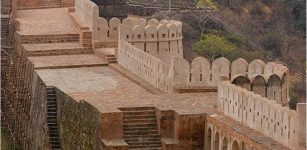 Magnificent And Massive Great Wall Of India – Astonishing Ancient Structure Shrouded In Secrecy
Civilizations | Jul 7, 2015
Magnificent And Massive Great Wall Of India – Astonishing Ancient Structure Shrouded In Secrecy
Civilizations | Jul 7, 2015 -
 1,750-Year-Old Fresco Travertines Buried Underground – Recovered In Ancient Laodicea
Archaeology | Mar 19, 2020
1,750-Year-Old Fresco Travertines Buried Underground – Recovered In Ancient Laodicea
Archaeology | Mar 19, 2020 -
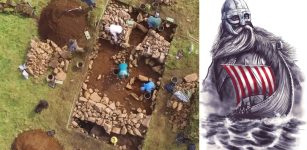 Possible Viking Boat Burials Discovered On The Isle Of Mull
Archaeology | Sep 12, 2022
Possible Viking Boat Burials Discovered On The Isle Of Mull
Archaeology | Sep 12, 2022 -
 Extremely Rare English Medieval Shipwreck With Fascinating Cargo Discovered In Poole Bay, Dorset
Archaeology | Jul 23, 2022
Extremely Rare English Medieval Shipwreck With Fascinating Cargo Discovered In Poole Bay, Dorset
Archaeology | Jul 23, 2022 -
 Smuggled 1,800-Year-Old Lydian Atonement Inscription Sent Back To Turkey By Italy
Artifacts | Sep 28, 2020
Smuggled 1,800-Year-Old Lydian Atonement Inscription Sent Back To Turkey By Italy
Artifacts | Sep 28, 2020 -
 Jezebel Of Sidon – Wicked Wife Of King Ahab And Her Evil Rule
Biblical Mysteries | Aug 7, 2019
Jezebel Of Sidon – Wicked Wife Of King Ahab And Her Evil Rule
Biblical Mysteries | Aug 7, 2019 -
 Ruins Of 2,300-Year-Old City Of Jiaohe On The Silk Road
Civilizations | Aug 6, 2023
Ruins Of 2,300-Year-Old City Of Jiaohe On The Silk Road
Civilizations | Aug 6, 2023 -
 ‘Viking Disease’ Hand Disorder May Come From Neanderthal Genes
Archaeology | Jun 14, 2023
‘Viking Disease’ Hand Disorder May Come From Neanderthal Genes
Archaeology | Jun 14, 2023 -
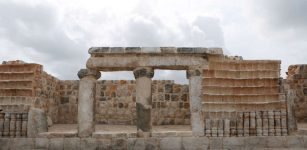 Ancient Mayan City Filled With Palaces, Pyramids And Plazas Discovered On Construction Site In Mexico
Archaeology | May 27, 2022
Ancient Mayan City Filled With Palaces, Pyramids And Plazas Discovered On Construction Site In Mexico
Archaeology | May 27, 2022 -
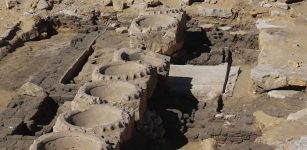 4,500-Year-Old Lost ‘Sun Temple’ Dedicated To God Ra Unearthed In Abu Gorab Necropolis
Archaeology | Aug 4, 2022
4,500-Year-Old Lost ‘Sun Temple’ Dedicated To God Ra Unearthed In Abu Gorab Necropolis
Archaeology | Aug 4, 2022 -
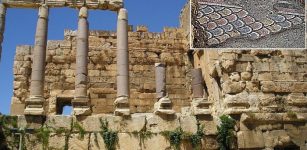 Roman Mosaic Dated To Between 60 BC And 300 AD Unearthed In Baalbek
Archaeology | Dec 30, 2020
Roman Mosaic Dated To Between 60 BC And 300 AD Unearthed In Baalbek
Archaeology | Dec 30, 2020 -
 Secrets Of The Famous Hellenistic-Era Kyrenia Shipwreck Revealed
Archaeology | Jun 28, 2024
Secrets Of The Famous Hellenistic-Era Kyrenia Shipwreck Revealed
Archaeology | Jun 28, 2024 -
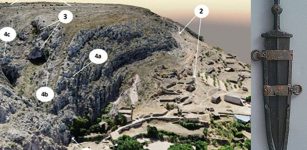 Previously Unknown 2,000-Year-Old Celtiberian City Discovered- Has The Lost City Of Titiakos Been Found?
Archaeology | Jul 18, 2023
Previously Unknown 2,000-Year-Old Celtiberian City Discovered- Has The Lost City Of Titiakos Been Found?
Archaeology | Jul 18, 2023 -
 Ancient Roman Sarcophagus With A Female Skeleton And A Perfume Bottle Discovered In Turkey
Archaeology | Dec 27, 2019
Ancient Roman Sarcophagus With A Female Skeleton And A Perfume Bottle Discovered In Turkey
Archaeology | Dec 27, 2019 -
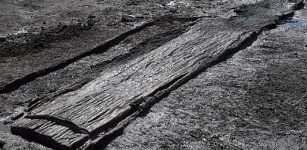 Bronze Age ‘Washingborough Boat’ Will Reveal Boat Building Techniques Of Ancient People
Archaeology | May 11, 2017
Bronze Age ‘Washingborough Boat’ Will Reveal Boat Building Techniques Of Ancient People
Archaeology | May 11, 2017 -
 Major Underwater Archaeological Find On The Western Coast Of Sicily – Artifacts From The Battle Of The Egadi Islands?
Archaeology | Sep 11, 2023
Major Underwater Archaeological Find On The Western Coast Of Sicily – Artifacts From The Battle Of The Egadi Islands?
Archaeology | Sep 11, 2023 -
 DNA Reveals How The Vikings Changed Scandinavian Migration And Ancestry
Archaeology | Jan 5, 2023
DNA Reveals How The Vikings Changed Scandinavian Migration And Ancestry
Archaeology | Jan 5, 2023 -
 Jörmungandr – Hideous Poison-Spewing Midgard Serpent Was One Of Loki’s Children
Featured Stories | Mar 31, 2018
Jörmungandr – Hideous Poison-Spewing Midgard Serpent Was One Of Loki’s Children
Featured Stories | Mar 31, 2018 -
 DNA From Doggerland That Separates The UK From Europe – New Study
Archaeology | Jul 20, 2020
DNA From Doggerland That Separates The UK From Europe – New Study
Archaeology | Jul 20, 2020



